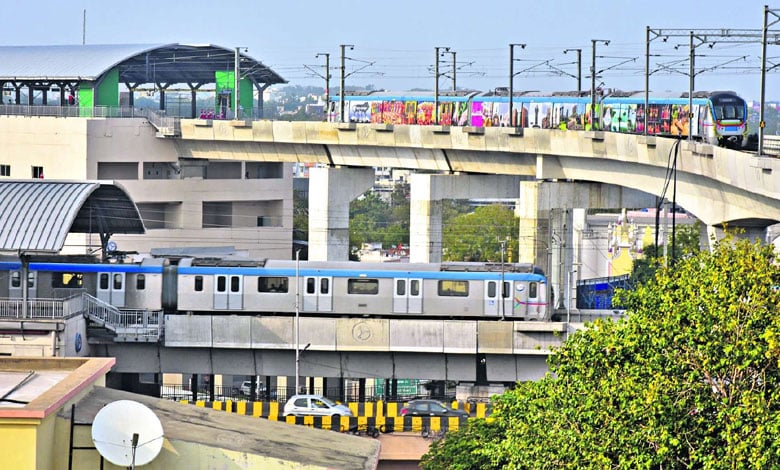Hyderabad’s Mega Metro Project: A 30-Acre Multi-Modal Transit Hub at Jubilee Bus Station
Hyderabad is set to witness a major upgrade in its public transportation system as the Hyderabad Airport Metro Limited (HAML) unveils plans for a state-of-the-art metro hub at Jubilee Bus Station (JBS) in Secunderabad.

Hyderabad is set to witness a major upgrade in its public transportation system as the Hyderabad Airport Metro Limited (HAML) unveils plans for a state-of-the-art metro hub at Jubilee Bus Station (JBS) in Secunderabad. This innovative project will mark the city’s first integrated transit hub, combining three metro lines with a modernized bus terminal in a sprawling 30-acre space.
Table of Contents
A Vision for Seamless Connectivity
The JBS metro hub, developed under a public-private partnership (PPP) model, is designed to accommodate the rising demand for metro services while improving overall urban mobility. HAML Managing Director NVS Reddy highlighted the scale of the project, pointing out that it will not only address congestion issues but also create a dynamic, world-class transit-oriented development.
“It is high time that we decongested the city. With this world-class hub, we’re not just solving transportation issues but creating a new center of urban activity that can compete with the best in the world,” Reddy said.
While the initial plan allocated five acres for the project, Telangana’s Chief Minister suggested expanding the vision to cover up to 50 acres, enhancing its potential impact.
Also Read: Telangana and Hyderabad Schools to Remain Close on February 14 Due to…
Modern Facilities and Infrastructure
The proposed JBS metro hub will feature cutting-edge infrastructure to serve the growing number of commuters in Hyderabad. Key features include:
- Multi-Level Parking: Extensive cellar parking facilities to manage vehicles efficiently.
- Revamped Bus Complex: A modernized bus terminal that integrates with metro lines for a seamless commuter experience.
- Interconnected Metro Stations: Three separate metro stations will be linked via a skywalk network, ensuring smooth passenger movement and easy transfers.
- Commercial Development: The hub will also house shopping malls, office complexes, and high-end dining establishments, making it a vibrant urban center.
Unlike the integrated stations at Ameerpet and Mahatma Gandhi Bus Station (MGBS), which have multiple lines sharing a single structure, the JBS hub will feature three distinct metro stations, connected by skywalks.
The new metro station, linking to Medchal, will be located parallel to the existing five-story JBS Parade Ground station.
Skywalks and Urban Transformation
The JBS metro hub will heavily incorporate skywalks to connect the metro stations and commercial areas, improving passenger flow and operational efficiency. The blue and green metro line stations at JBS are already connected via skywalks, and the new station will seamlessly integrate into the existing infrastructure.
Public-Private Partnership to Drive Investment
The ambitious project will be fully developed through a PPP model, attracting significant private investment. “This particular hub will be developed entirely through the PPP route, ensuring world-class infrastructure and amenities. There won’t be any need to travel to western Hyderabad for the best shopping or dining,” Reddy confirmed.
Redefining Urban Transit in Hyderabad
The JBS metro hub is poised to revolutionize Hyderabad’s public transportation system, marking a shift toward transit-oriented development. The city’s ambitious metro hub is expected to be one of the most extensive multi-modal integration projects in India. Aside from Delhi’s Kashmere Gate station, which also integrates three metro lines and a bus terminal, no other metro project in India has attempted such a large-scale integration.
With its modern infrastructure, commercial amenities, and seamless connectivity, the JBS metro hub is set to redefine urban transit in Hyderabad, making daily commutes more convenient and contributing to the city’s growth as a global metropolis.
